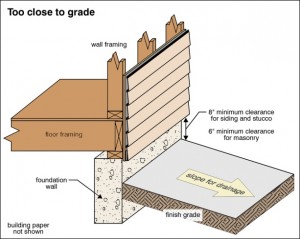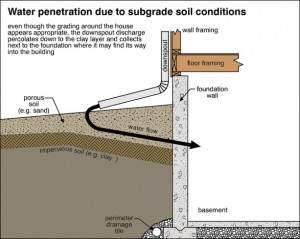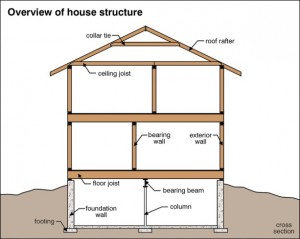What can a homeowner or real estate agent do NOW to better protect their homes against moisture intrusion?
This question is coming up all of the time this year. 2013 is a little unique and if the home that you have owned for years, or have just purchased, has moisture in the basement; you may just be experiencing the strange end to the past winter. We have had lots of rain and freeze thaw conditions that have overcome basement protection in many MN homes. You are likely discovering that basement protection that has worked for many years has simply been overwhelmed by seasonal conditions.
Homeowners, follow these 9 Steps to prevent a repeat of this year’s conditions causing moisture problems in the lower level of your home.
- Clean out and cover, window wells
- Fill all low spots along the side of your foundation
- Grade the soil away from the exterior wall, to an angle of 6 inches fall, in the first 10 feet from the foundation. If you don’t have 10 feet from the foundation to an obstruction or the boundary line; create a swale. Swales will be described in the very next blog.
- Clean out and replace or repair any damage to gutters
- Make sure gutter downspouts extend at least 6 feet away from the foundation
- Verify the neighbors’ gutter extensions are not directed towards your house
- Test the sump pump
- Make sure the sump pump exterior discharge pipe extends at least 10 feet away from the foundation (not into the laundry tub or floor drain)
- Have a battery backup sump pump installed
MN real estate agents, when contracting a home inspector in the future; be certain that you have employed someone who is on top of their game and very knowledgeable about grading, drainage, and sumps. Fail to employ a knowledgeable and diligent inspector and you may pay the price in a year like 2013.
When buying or selling a home, it is important to use the services of the best MN home inspector that you can find. Do your due diligence, and be certain that you are employing somebody who doesn’t miss the details. Ask yourself…
Can this inspector find the elusive signs of occasional water problems as well as all the other issues found in today’s homes?
Doug Hastings
MN Home Inspector, Minneapolis & St. Paul
Kaplan University, Home Inspection Lead Instructor
Rob ‘Pops’ Leslie
Kaplan Professionals, Retired








